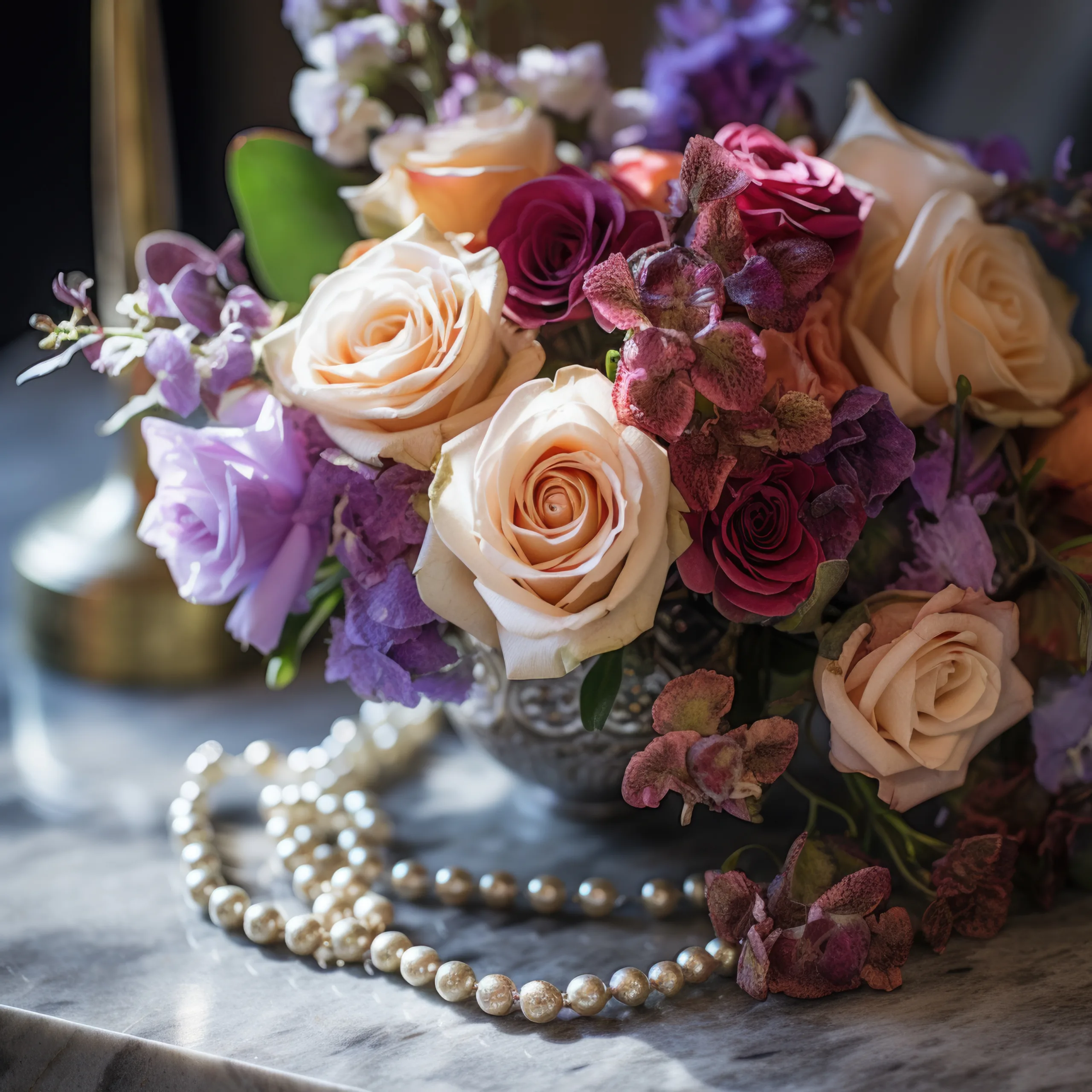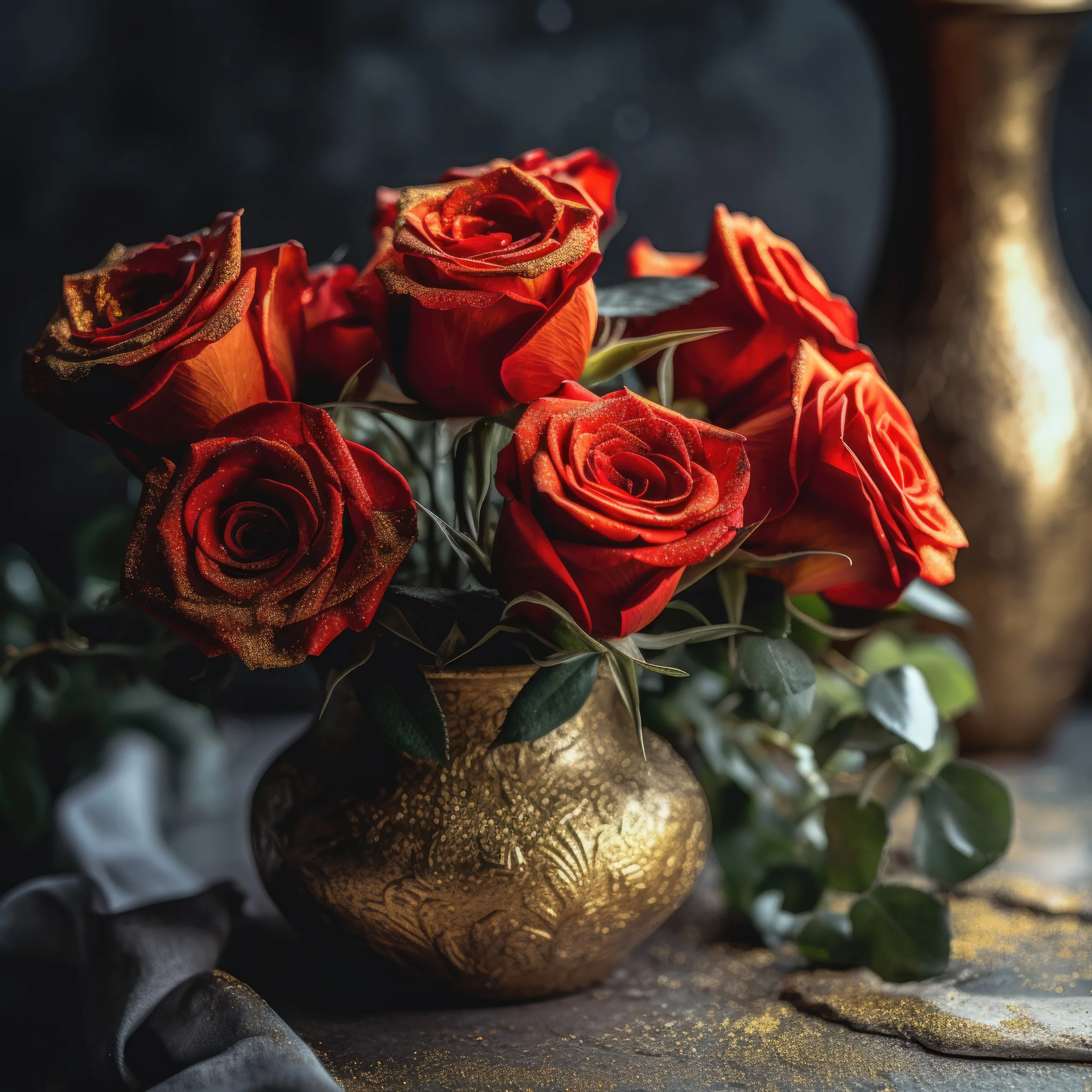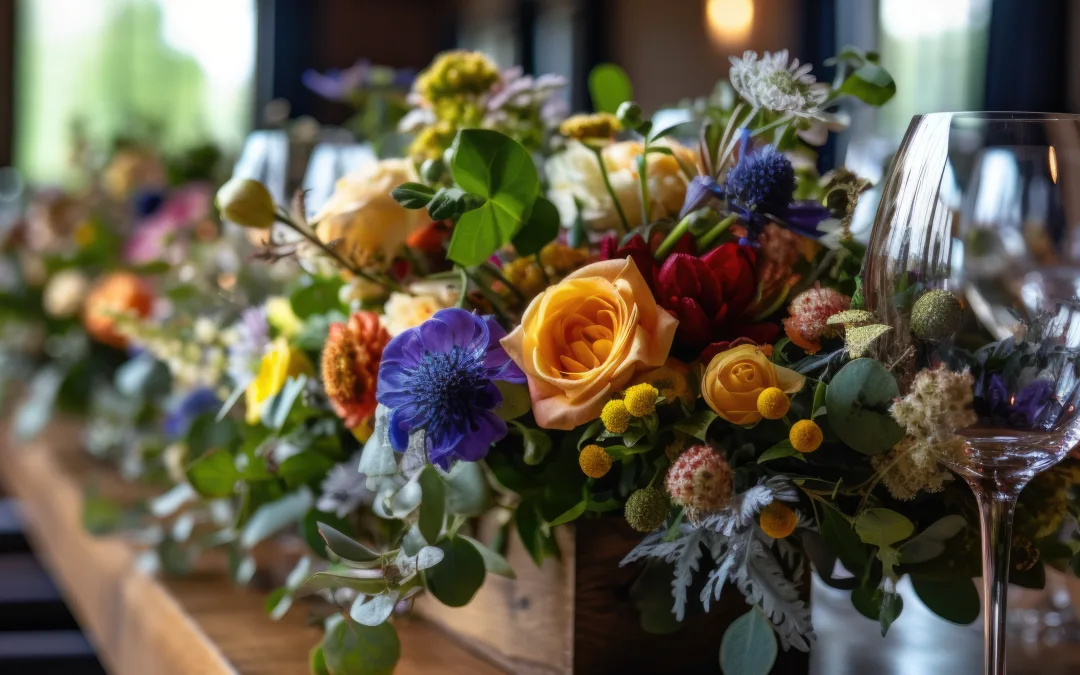Lets dig those flower photos
Wedding photography is an art that requires attention to detail, creativity, and the ability to capture the essence of the wedding day. One important aspect of wedding photography is capturing the bridal bouquet. The blooms should be photographed with care to create beautiful images that complement the bride’s dress and the overall theme of the wedding. A wedding photographer needs to capture the bouquet from different angles and in various lighting conditions to ensure that the florist’s work is highlighted in every pose.
Bouquet Photos
The photos of a bridal bouquet can be used to capture beautiful images of blooms arranged by a skilled florist. These photos can be used as decorative pieces or in a wedding album, showcasing the unique colors and beauty of the bouquet. When photographing a bouquet, it’s essential to experiment with different camera angles and lighting conditions to highlight its relationship with other elements of the wedding day.
Wedding Bouquet
A wedding bouquet is not merely a bunch of flowers held by a bride on her special day; it represents the love and commitment between two people. It’s important to consider how best to showcase this symbol in photographs. A good approach would be to focus on close-up shots that highlight details such as blooms, colors, and textures while also taking wider shots that show how it fits into the overall setting. To achieve beautiful images, it’s crucial to work with a skilled florist who can create a bouquet that complements the bride’s style and personality.
Bridal Bouquet
The florist can help the bride choose the perfect bouquet that complements her dress and reflects her personality by incorporating colors that she loves. It’s important for photographers to work closely with brides and florists to share their vision and create images that truly represent them on their special day.
Wedding Photographer
As a professional photographer in the business, it is crucial to understand your client’s work vision for their bouquet photo shoot. You must have excellent communication skills to share ideas with your clients before capturing their pictures. It’s essential to discuss colors to ensure that their vision is well-executed.
Bouquet
When working on photographing bouquets for a business, there are several things you need to keep in mind: lighting conditions (natural light vs artificial light), composition (angles), colors (complementing the bride’s dress and the wedding theme), and the bouquet’s unique features (texture, shape, size, etc.). It is important to share your work with Amanda to ensure it meets the client’s expectations.
Wedding Dress
The photographer should work closely with the bride to ensure that the bridal bouquet complements the wedding dress. It is important to share ideas and discuss the color palette of both elements to create a cohesive look. This attention to detail is crucial for business as it showcases the photographer’s skill in capturing the perfect shot.
Photo
A photo is worth a thousand words, and in wedding photography, it’s essential to capture every detail so that clients can share and relive their special day for years to come.
Camera settings and lighting techniques for capturing the perfect shot
Adjust Camera Settings to Capture the Bouquet’s Detail and Color
Capturing the perfect shot of a wedding bouquet requires some technical know-how. One of the most important aspects is adjusting your camera settings to capture the bouquet’s detail and color accurately. To start, set your camera to aperture priority mode, which allows you to control the depth of field while letting your camera choose the appropriate shutter speed. This way, you can adjust your aperture to create a shallow depth of field that will help bring focus to the bouquet while blurring out any distracting background elements. Don’t forget to share your stunning shots with the bride and groom!
As a wedding photographer, it’s important to consider adjusting your ISO settings based on lighting conditions. If you’re shooting in low light, increasing your ISO can help brighten up the image without compromising on quality. However, be careful not to overdo it as high ISO settings can introduce noise into your photos. Don’t hesitate to share this tip with other wedding photographers!
Lastly, make sure you’re shooting in RAW format instead of JPEG to capture the perfect photo. RAW files contain more information and allow for greater flexibility during editing, resulting in stunning images of wedding bouquets with ease.
Use Natural Light or Set Up Lighting to Enhance the Shot
Lighting plays a crucial role in photography and can make or break an image. When photographing wedding bouquets, natural light is often the best option as it provides soft and flattering illumination that complements floral arrangements beautifully. Look for areas with ample natural light such as near windows or outdoors in open shade.
If natural light isn’t available or isn’t sufficient for the perfect photo, wedding photographers should consider setting up lighting equipment such as strobes or softboxes. These tools can help provide even lighting that highlights every detail of the bouquet while minimizing harsh shadows.
Experiment with Different Lenses and Frames to Create Beautiful Images
Wedding photographers are always looking for new ways to capture special moments creatively. One way they achieve this is by experimenting with different lenses and frames when photographing wedding bouquets. A macro lens is an excellent choice for capturing intricate details of the bouquet, such as individual petals or the texture of the foliage. On the other hand, a wide-angle lens can help capture the entire scene and provide context to the image.
Another way to get creative is by experimenting with different frames to capture the perfect photo. Consider shooting from unique angles such as above or below the bouquet, or incorporating elements such as mirrors or reflections into your shots. By trying out different lenses and frames, you’ll be able to create stunning images that truly capture the beauty of wedding bouquets.
Finding the right angle and lighting for great bouquet photos
Right Angle: Capturing the Bouquet’s Beauty
Finding the right angle is crucial for a wedding photographer to capture stunning bouquet photos. The angle can make or break the photo, as it can either highlight or obscure the bouquet’s beauty. When taking photos of the bouquet, a wedding photographer should always consider where they are standing and where their subject is placed.
One popular angle for photographing bouquets is from above, such as while standing on a chair or ladder. This angle allows you to capture the full view of the bouquet and its surrounding details, such as table settings or other flowers in the background. Another popular angle is to shoot from below, such as while crouching down low near the aisle. This angle can create a unique perspective by emphasizing the height and grandeur of the bouquet.
Shooting from a side angle can also create an interesting perspective that highlights different aspects of the bouquet. For example, taking a photo from one side may emphasize certain colors or textures that would not be visible from another angle.
Right Lighting: Enhancing Bouquet Colors and Details
Another important factor to consider when photographing bouquets is lighting. Proper lighting can enhance colors and details in ways that make them appear more vibrant and visually appealing.
When choosing your lighting setup, avoid harsh overhead lights that may cast unflattering shadows on your subject. Instead, opt for natural light sources like windows or outdoor settings if possible – these will provide soft light that will flatter your subject without overpowering it.
If natural light isn’t available or isn’t sufficient for your needs, consider using artificial lights like lamps or studio lights to create a soft glow around your subject. Be sure to experiment with different angles and intensities until you find something that works well with your particular subject.

Centered Bouquets: Creating Balanced Compositions
Centering bouquets in frames creates balanced compositions that draw attention to their beauty while also highlighting other elements in the scene.
When composing your shot, try centering the bouquet in the frame to create a balanced composition. This will draw attention to the bouquet while also highlighting other elements in the scene, such as the bride’s dress or other floral arrangements.
Waist-Level Shots: Capturing Bride’s Hands and Dress Details
Taking waist-level shots of bouquets can capture not only their beauty but also details about the bride’s dress and hands.
When taking waist-level shots, ensure that you are positioned at an angle that allows you to capture both the bouquet and any details about the bride’s dress or hands. This will give viewers a better sense of how everything fits together and provide more context for the photo.
Posing with flower bouquets and caring for your flowers
Practice Posing with the Bouquet
Your wedding day is one of the most special moments in your life, and you want to make sure that every detail is perfect. One of the essential elements of any wedding ceremony is the flower bouquet. As a bride, it’s important to practice posing with the bouquet before the big day to find your best angle and showcase its beauty.
When practicing poses, keep in mind your dress and how you want to present yourself. Hold the bouquet at different angles and experiment with different poses until you find one that feels natural and comfortable. Remember that this moment is all about love, so let your face reflect that emotion.
Work with Your Florist
Choosing blooms for your bouquet can be overwhelming, but working with an experienced florist can help ease some of that stress. Your florist can guide you through selecting flowers that complement your dress and overall wedding aesthetic.
Consider incorporating seasonal flowers or ones with personal significance into your bouquet. For example, if you met your partner in a rose garden, consider including roses in your bouquet as a nod to that special moment.
Caring for Your Flowers
To ensure that your flowers look their best throughout the ceremony and reception, it’s crucial to care for them properly. Keep them hydrated by placing them in water when not in use, and designate a room for the ladies to store them during the ceremony.
Afterward, place them back into the water as soon as possible if they will be used again later in the day. If not, consider donating them to a local nursing home or hospital so others can enjoy their beauty.
Working with Vendors
Remember that planning a wedding takes time and effort from multiple vendors who are there to make sure everything runs smoothly on your big day. Be sure to communicate clearly with each vendor involved in creating your flower arrangements so everyone understands what is expected of them.
Make sure everyone has clear instructions on where they need to be and when they need to be there. This will help ensure that your day runs smoothly, and you can focus on having fun and enjoying the moment.
Simplifying the background for flawless bouquet photos
Choosing the Right Background for Flawless Bouquet Photos
The background can make all the difference. A simple and uncluttered background can help the bouquet stand out and make for a stunning photo. Here are some tips on how to simplify your background for flawless bouquet photos.
Choose a Simple and Uncluttered Background
The first step in simplifying your background is to choose a simple and uncluttered one. Look for plain walls, doors, or curtains that can create an easy background. By keeping the background simple, you can draw more attention to the bouquet itself. This will help create a beautiful photo that highlights the beauty of both the flowers and their arrangement.
Avoid Busy Backgrounds
While it may be tempting to take photos of bouquets in busy or interesting locations, this can actually detract from the beauty of the flowers themselves. Busy backgrounds like crowded streets or patterned walls can distract from the bouquet and make it difficult to focus on its details. Instead, opt for backgrounds that are clean and minimalistic.
Case Study: Simplified Backgrounds
One example of simplified backgrounds in bouquet photography is using a white wall as a backdrop. The simplicity of this type of background allows for all focus to be on the flowers themselves while still creating an elegant look. Another example is using natural surroundings such as trees or grass as an easy backdrop which also adds texture without distracting from the bouquet.
Five important tips for capturing the perfect bouquet toss shot
Use a fast shutter speed to capture the bouquet toss in motion.
A bouquet toss is a momentous event during any wedding, and as a photographer, you want to ensure that you capture it perfectly. One of the most important tips for capturing the perfect bouquet toss shot is to use a fast shutter speed. This will help freeze the motion of the bouquet in mid-air, giving you a clear and sharp image.
It’s recommended to use a shutter speed of at least 1/500th of a second or faster. This will allow you to capture the action without any blur or distortion. Keep in mind that different lighting conditions may require adjustments to your shutter speed, so be prepared to make changes as needed.
Position yourself strategically to get the best angle for the shot.
Another essential tip for capturing great bouquet toss shots is positioning yourself strategically. You want to be in an optimal location where you can see both the bride and her bridesmaids clearly. Ideally, position yourself directly in front of them or slightly off-center for an interesting perspective.
You can also experiment with different angles by shooting from above or below, depending on your preference and style. Just make sure that you’re not blocking anyone’s view or getting in their way during this crucial moment.
Adjust your camera settings to ensure proper exposure in different lighting conditions.
Lighting plays a significant role in photography, and weddings are no exception. Different venues and times of day may have varying lighting conditions that can affect your photos’ exposure levels. To ensure proper exposure during the bouquet toss, adjust your camera settings accordingly.
For example, if you’re shooting outdoors on a bright sunny day, consider using a lower ISO setting and faster shutter speed for better contrast and clarity. In contrast, if you’re indoors with low light levels, increase your ISO setting while keeping your aperture wide open for more light intake.
Anticipate the moment and be ready to capture the action.
Timing is everything and be ready to snap away as soon as the bride tosses the bouquet.
It’s also a good idea to take multiple shots in rapid succession, so you have more options to choose from later. Remember that sometimes, unexpected moments can happen during the bouquet toss, such as a bridesmaid jumping up or someone blocking your view. Be adaptable and flexible, and don’t get discouraged if things don’t go exactly as planned.
Don’t forget to focus on the bride’s expression during the toss.
Finally, while it’s essential to capture the bouquet in motion, don’t forget about capturing the bride’s expression during this exciting moment. The look of joy and anticipation on her face is just as important as catching the bouquet mid-air.
Make sure that you’re focusing on her facial expressions throughout this event. You want to capture all of her emotions leading up to and after she throws the bouquet. These candid moments will add depth and emotion to your photos and make them even more memorable for years to come.
Properly holding your bouquet: things to keep in mind
Hold the Bouquet at Waist Level: Avoid Blocking the Bride’s Dress
One of the most important things to keep in mind when photographing a wedding bouquet is how you hold it. The last thing you want is to block the bride’s dress with the bouquet, so make sure to hold it at waist level. This will ensure that you don’t obstruct any key details of the dress or veil.
Holding the bouquet at waist level also allows for a clear view of the bride’s face and expression, which is crucial for capturing those emotional moments. Holding it at this height provides a more natural-looking pose for both the bride and the photographer.
Keep Your Elbows Close to Your Body: Maintain Stability and Avoid Shaky Shots
Another essential tip for properly holding a wedding bouquet while photographing it is keeping your elbows close to your body. By doing this, you’ll be able to maintain stability and avoid shaky shots. This is especially important if you’re shooting with a longer lens or in low-light conditions.
When your elbows are close to your body, they act as a stabilizer, reducing the camera shake caused by hand movement. This technique can help produce sharper images and prevent blurry photos that could ruin an otherwise beautiful shot.
Tilt the Bouquet Slightly Towards the Camera: Showcase Its Details and Colors
Finally, when photographing a wedding bouquet, consider tilting it slightly towards the camera. Doing so will showcase its details and colors while creating depth in your composition.
By tilting the bouquet towards the camera, you’ll bring out its unique features such as intricate floral arrangements or vibrant colors that might have gone unnoticed from other angles. It also creates an interesting focal point that draws attention to both the bouquet and the bride.
Wedding Bouquet Tips
In addition to these three tips on how to properly hold a wedding bouquet while photographing it, there are several other things to keep in mind:
Make sure the bride’s hands are relaxed and natural-looking while holding the bouquet.
Avoid casting shadows on the bouquet by using diffused lighting or shooting in an open shade.
Experiment with different angles and compositions to create unique shots that showcase the bouquet’s beauty.
Don’t forget to capture close-up shots of the bouquet, highlighting its intricate details.

Tips for taking great pictures of wedding flower bouquets
Great photos of wedding flower bouquets can add a touch of magic to your wedding album. Capturing the beauty and elegance of these floral arrangements requires skill, technique, and creativity. Whether you’re a professional photographer or an amateur, there are some tips you need to keep in mind if you want to take stunning pictures of bridal bouquets.
Firstly, camera settings and lighting techniques are crucial for capturing the perfect shot. Ensure that your camera settings are appropriate for the lighting conditions at your venue. Use natural light as much as possible and avoid using flash unless necessary. Look for unique angles that showcase the bouquet’s colors, textures, and shapes.
Secondly, finding the right angle and lighting is essential for great bouquet photos. Experiment with different angles and positions until you find what works best for each bouquet. Try shooting from above or below to highlight different aspects of the flowers.
Thirdly, posing with flower bouquets is an important aspect of taking great pictures. The bride should hold her bouquet in a way that complements her dress while showcasing its beauty. Also, ensure that the flowers remain hydrated throughout the day so they look fresh in your photos.
Fourthly, simplifying the background is crucial for flawless bouquet photos. Avoid cluttered backgrounds that distract from the main subject – the flowers! Instead, opt for simple backgrounds like plain walls or greenery to make your bouquet stand out.
Fifthly, capturing the perfect bouquet toss shot requires careful planning and timing. Anticipate when the toss will happen so you can be ready with your camera at just the right moment. Take multiple shots to ensure that you get one that captures all the action perfectly.
Lastly, properly holding your bouquet is something often overlooked but incredibly important when it comes to taking great photos! Make sure you know how to hold your bouquet correctly so that it looks natural in all your pictures.

